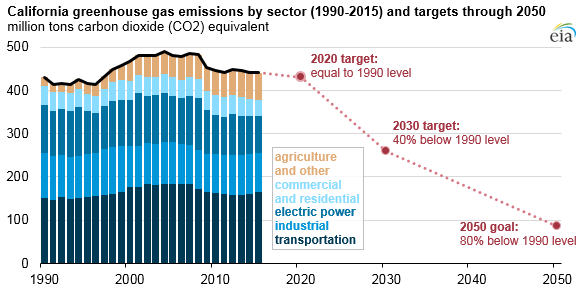In July 2017, California’s state legislature passed a bill to extend the state’s economy-wide GHG reduction program, until 2030. The bill sets a new GHG target, aiming at least 40% below the 1990 level of emissions by 2030.
The original bill passed in 2006 and authorized the California Air Resources Board (CARB) to monitor and regulate sources emitting GHG. The target was to reduce emissions to the 1990 level by 2020. An executive order from California’s governor targets an 80% reduction from 1990 levels by 2050.
Two years ago, in 2016, CARB made a new plan, involving programs such as the Low Carbon Fuel Standard (LCFS) program and the state’s renewables portfolio standard. The LCFS program aims to increase the use of biofuels in the transportation sector. California’s renewables portfolio standard sets targets for technologies used to generate electricity in the state.

According to the existing cap-and-trade program, emissions sources include electric generators, industrial facilities, and oil and natural gas distributors. Companies which comply with this program can either purchase allowances or directly reduce their emissions. They also can finance carbon offset credits, which are earned under a separate program for voluntary projects that lower overall GHG emissions.
Furthermore, the new legislative package seeks to reduce other pollutants as well. Namely, the bill, AB 617, aims to reduce community-level air pollution from criteria pollutants like particulates, sulfur dioxide, and nitrogen dioxide emitted by large stationary sources. With this bill CARB has the ability to create a system that consults with local air districts responsible for monitoring air pollution, and it develops a strategy to reduce emissions.


























































